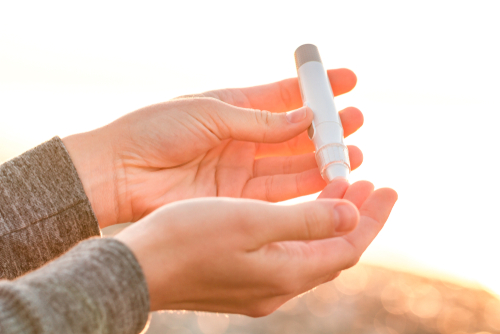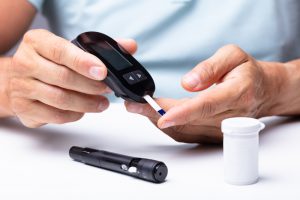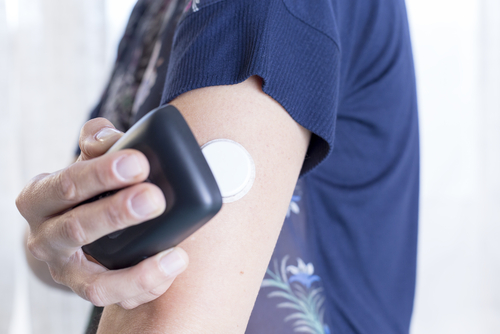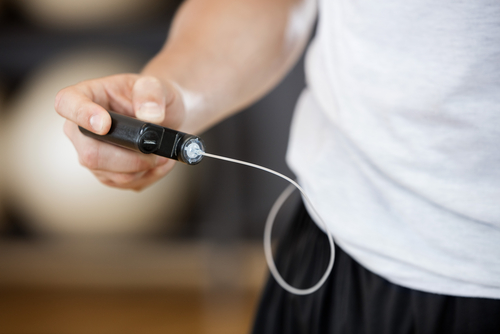How is blood glucose monitored?

How is blood glucose monitored?
If you have type 1 diabetes, you will need to try to keep your blood glucose levels stable. This will mean balancing the food you eat, the insulin you inject, and your daily levels of activity. It is crucial that you monitor your blood glucose regularly. You can do this by doing a fingerprick test, or by using flash or continuous glucose monitoring (more about this later). You will use your blood glucose readings to guide you around how much insulin to take and to balance the carbohydrate in your diet, to try to avoid very high or low blood glucose levels.
Highs and lows
Some people claim to know instinctively when their blood glucose is too high, too low, or just right, but the only reliable way of knowing this is by testing. Symptoms can also be misleading: you may be tired or thirsty because your blood glucose is too high, or because of hot weather. Similarly, you may feel dizzy and light-headed because of low blood glucose, but you could just as easily be simply dehydrated or tired.
Exercising, eating out, drinking alcohol, and stress can all have an effect on your blood glucose levels, so to be able to do these things without experiencing low or high blood glucose levels means you need to test regularly.
How often should I check it?
As you become more confident in managing your diabetes you will be able to decide this largely for yourself. Depending on the insulin regimen you are on, and your day-to-day activities you might check it around four times a day, usually before meals and before bed. But if you have a very active or stressful life, which can cause more frequent highs and lows in your blood glucose, or if you drive, you may need to check it more often. If you count your carbs or if you eat a new type of food, you might want to check after eating too.
Spotting patterns
Testing regularly, noting down the results and reviewing them carefully will help you spot patterns of high or low results that might help you chose more accurate insulin doses over time. Regular low blood glucose levels before lunchtime for example may indicate that your morning insulin dose is too high. Look out for patterns and discuss them with your diabetes care team.
In the long-term
Checking your blood glucose regularly gives you information that you can use to ensure your diabetes is well-controlled over the long term. This will reduce the risk of developing any longer term complications from your diabetes (see later section). Although high and lows are impossible to avoid completely, it’s best to keep these to a minimum.
Finger prick testing
This form of blood glucose monitoring shows you what your blood glucose level is at that moment in time.

Blood glucose levels are usually checked at home using a device called a home glucose meter. You need to prick your finger with a lancet to get a drop of blood and put this on a ‘test strip’ which is inserted in a small reader. This will tell you your glucose reading in seconds.
Watch the video below on how to check your blood glucose using a meter:
Intermittently scanned continuous glucose monitoring (isCGM)
New sensor technologies are emerging for monitoring blood glucose levels. These measure the levels of glucose in the fluid under your skin (called interstitial fluid) rather than in your blood.

An isCGM is a small sensor that you wear just under your skin, usually placed on your arm. The sensor is replaced every two weeks and it records your glucose (sugar) levels continuously throughout the day and night. You can find out your levels by scanning the sensor whenever you want to.
The most common isCGM used in the UK is called the Abbot ‘Libre’ and many users say it has transformed how they manage their blood glucose levels. They are now available free through the NHS so speak to your diabetes care team if you are interested in getting one.
Have a look at our video below of people’s experiences using their Libre:
Real-time continuous glucose monitors (rtCGM)
These also measure the levels of glucose in the fluid under your skin (called interstitial fluid) rather than in your blood.

rtCGM monitors your glucose levels continuously and sends data to your display device (a handheld monitor or pump). So you can set alerts for high, low or rate of change. (With isCGMs, it’s only when you scan your sensor that you get your reading and trends.) The sensor is usually attached to your stomach and you generally need to replace a sensor every 7 days.
It’s important to note that the level of glucose in interstitial fluid reacts slower than the level of glucose in the blood.
Therefore, users of isCGM or rtCGM systems should be aware that there is usually a lag of approximately 10 minutes between rises (or drops) in glucose levels compared with the blood.
People using these devices are advised to still perform standard blood glucose tests from time to time to ensure that the continuous glucose monitoring device is giving accurate enough results and before making any treatment corrections.



Leave a Reply
You must be logged in to post a comment.